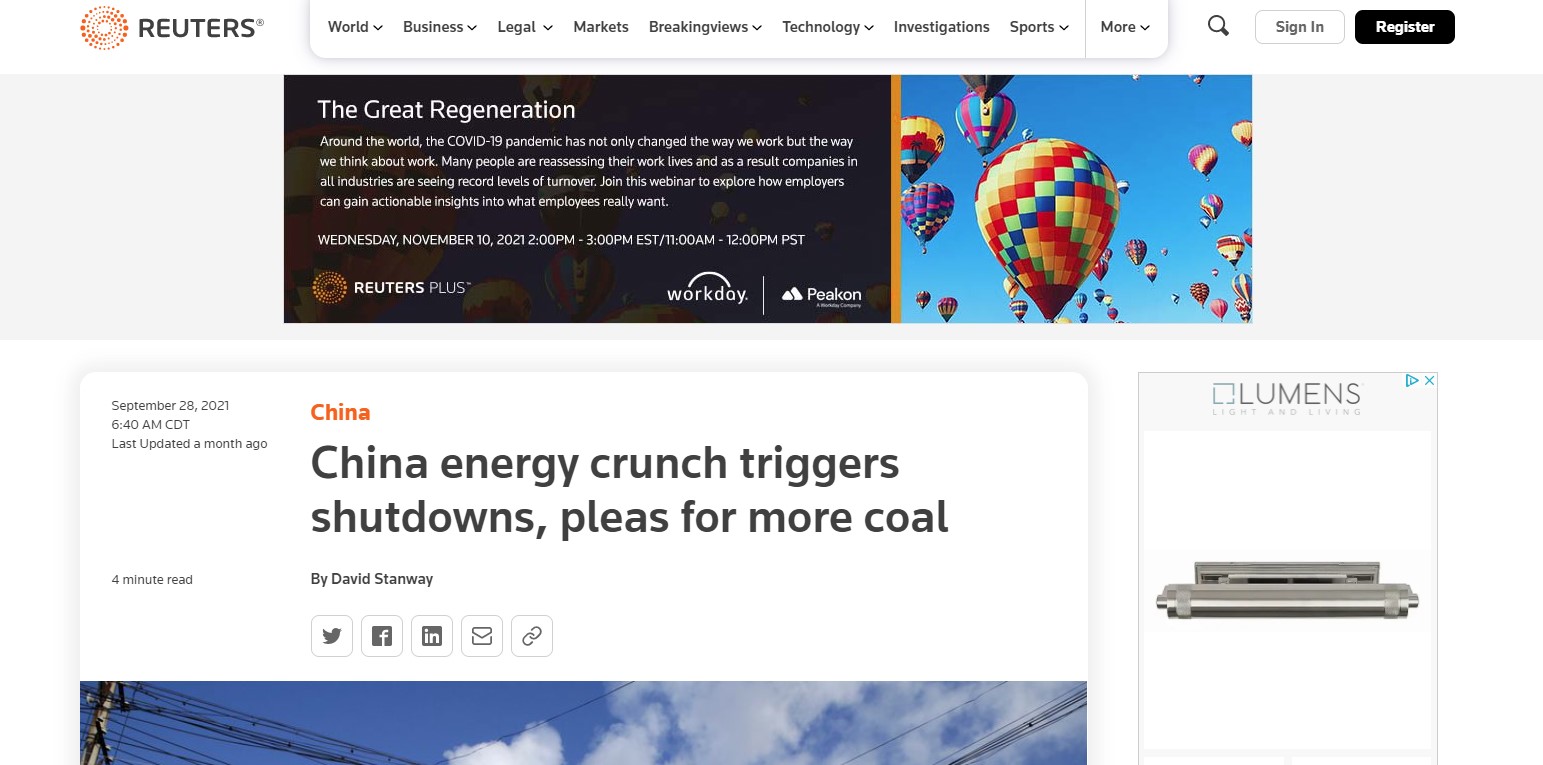Is an energy crisis coming to the United States?

News or Noise?! Is a 1970’s style energy crisis coming to the United States?
Now that the Covid-Delta wave is subsiding in the US, the networks have taken up a new fear. The energy crisis in Europe and China and how it might spill over to the US.
Let’s look at the facts. China is where the USA was in the 1970’s with a “communism kicker.” Energy dependent on the rest of the world for its supply. Somewhere between 60-70% of all of China’s electricity generation comes from coal. Coal has spent the last 15 years being vilified globally by the ESG movement. China still imports 10-20% of their coal and their boycotting of coal imports has recently led to a large deficit just as the world reopened and China manufacturing demand ramped. China is now the worlds largest importer of oil, clocking in at around 10mm barrels per day imported, or close to 60% of their demand!
Europe and Japan are energy dependent on others much like China. Japan consumes more than 6x its own energy reserves per year and relies heavily on importing resources like LNG from the US. Sub optimally, Europe is heavily reliant on Russia for much of their energy supply. Apparently, solar, windmills and rivers don’t get the job done during peak energy usage times!
Here in the USA, these stratospheric energy prices are unlikely to hit here. Prices will likely rise as they generally do during economic upturns but doubling and tripling is unlikely. Why? Unlike during the often-mentioned 1970’s, we are now energy independent from the rest of the world here in the USA. We are self-sufficient. That’s not to say that there can’t be spikes in prices here in the USA (California energy crisis, Texas freeze). However, these spikes are largely due to our energy resources being in the wrong places for their use due to cancellations in new pipelines the past 10 years by the ESG movement.
Even if energy prices spike in the US, its affect on the overall economy is dramatically lower than it was 20- 40 years ago. Post the 1970’s oil embargo, energy as a percentage of American GDP peaked at 14%. Most of the 80’s and 90’s that figure stood around 8% and the last data I found has it between 5-5.5% of US GDP. That number overstates its importance on our economy as we have moved more to a consumer service and work from home economy with Covid. Moreover, the U.S. is now a large energy producer. The U.S. produces about 11.3 million barrels a day, and exports oil and refined products to the rest of the world. We currently provide natural gas to Europe and Asia, in the form of LNG exports.
So, while the quick rise in energy prices is unwelcome and can cause a drag on consumer sentiment and spending here in the US, it is not the “death knell” for our economy, and highly unlikely to induce a recession like the 1970’s. Jim Cramer of CNBC provided some commentary:
Cramer argued, “The charts, as interpreted by Carley Garner, suggest that this oil rally’s living on borrowed time. Sooner or later, she thinks crude will roll over as privately held producers flood the market with supply.”
News or Noise: News…but for U.S. investors, largely Noise.
Source Articles :
https://www.reuters.com/world/china/china-energy-crunch-triggers-alarm-pleas-more-coal-2021-09-28/
This content contains general information and express the views of Oak Harvest Investment Services. All data, articles, and information cited are believed to be reliable at the time of creation; however, Oak Harvest does not warrant any information contained herein to be correct, complete, accurate or timely.
Oak Harvest provides links to content produced by other websites that OHFG does not control, and Oak Harvest does not necessarily approve or endorse such content and does not guarantee its accuracy. Nothing in this content constitutes personalized investment advice. Any charts, indicators, or graphs included or referenced in this content have limitations, and no such material is able, in and of itself, to provide a buy or sell recommendation for any security. Strategies and ideas discussed may not be right for you, and views and opinions expressed may change without notice. Strategies and ideas discussed will not apply to all client accounts or portfolios.
Nothing in this content constitutes a recommendation, or an offer or solicitation to buy or sell securities. Oak Harvest makes no assurance as to the accuracy of any forecast or projection made. Not all past forecasts or projections were, nor future forecasts and projections may be, as accurate as any forecasts discussed. Indexes like the S&P 500 are not available for direct investment and your results may differ. Past performance is not indicative of future results. Investing involves the risk of loss.




